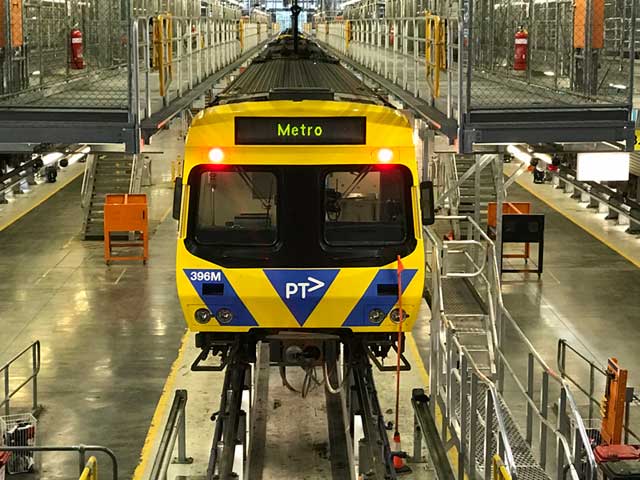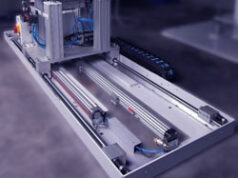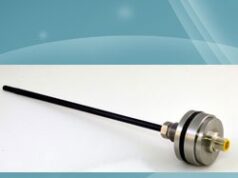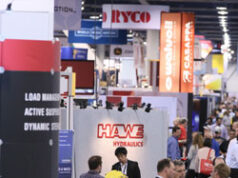Norgren’s innovative AMT compressed air drying solution is reducing relative humidity levels down to less than 10% for a major Australian metro operator, helping keep its train network on the move and provide a reliable and safe transportation service for its 240 million passengers each year.
Compressed air is vital when it comes to ensuring that essential applications on railway networks keep moving. Braking systems, pneumatically operated doors, self-levelling suspension, pantographs and even the train’s horn, are all reliant on clean compressed air to operate effectively and reliably.
Operators have to contend with the challenge of keeping the compressed air free of contamination, as moisture, foreign particulate and contaminated compressor oil affect the production of clean and dry compressed air. The consequences of contaminated compressed air can negatively affect train system reliability and performance leading to unscheduled maintenance, costly repairs and even system failure.
Tackling this issue has seen Norgren work with the Metro Trains network based in Melbourne, Australia, to develop an innovative compressed air dryer solution that enhances the operational efficiency and ongoing reliability of Metro Train’s entire Comeng fleet of 68 six- carriage rolling stock.
Steve Hill for Norgren says: “The Victorian Government and Metro Trains started to review the performance of its fleet in 2016 as part of the fleet’s interior and exterior refurbishment project. The legacy compressed air system was found to be ineffective in the way it removed water / moisture from the air system. This was causing premature failure to the components in the brake system and doors, potentially voiding the warranty on any repairs.”
Working with Norgren, Metro Trains embarked on a six-month trial using six of the company’s AMT dryers to monitor the relative humidity levels. Norgren’s patented AMT air dryer solution uses Adsorbent Media Tube (AMT) technology. It is made up of a high level of adsorbent and a non-adsorbing durable polymeric binder such as polyether sulfone to create a more efficient and reliable way of removing moisture from compressed air.
Using this patented AMT technology, water vapour adsorption and desorption kinetics are faster and more efficient, allowing sustained high levels of performance with less pressure drop and often with less purge air consumption. Should the AMT media tubes become saturated, there is no deterioration, by-product or chemical reaction.
The tubes are simply dried during the purge/regeneration process and returned to their original state continuing to function normally and removing the requirement for maintenance follow-up. In addition, the AMT structure is completely resistant to shock & vibration, can be mounted in any orientation and requires no regular maintenance. This also means there is no requirement for a post dust filter to catch the desiccant dust associated with traditional bead type rail dryers.
While the initial trial went well, with recorded relative humidity levels reduced from 70% to approximately 10%, Norgren was keen to develop a new solution which could also address the challenge of pressure drop during the compressor off-cycle purge.
Norgren worked to develop a new AMT integrated twin dryer, resolving the problem of the pressure drop, as one side of the twin chambers is purging at any given time during the compressor on-cycle. This meant the air purging wasn’t occurring during the compressor off-cycle and that acceptable pressure levels could be maintained whilst the compressor was not running.
Furthermore, Norgren also designed, developed and supplied customised rail standard mounting options using CAD & FEA modelling for the AMT twin dryer system to fit the two different trains within Metro’s fleet, with final configurations designed in collaboration with the business’ Melbourne and Leeds sites.
An additional benefit delivered by the twin AMT solution came with installation speed. Thanks to the integration of control valves within the dryer assembly, and the bespoke mounting systems, there is no requirement for separate installation of key components which significantly reduces installation time.
Despite an original twin AMT dryer installation completion date of late 2020 across the entire 68 six-carriage Comeng fleet , efficiencies and simplicity afforded by the integrated design has meant that the full Comeng fleet will have the new solution well ahead of the original completion date.
Adrian Thomson for Metro Trains, comments: “The fleet is undergoing a significant transformation and the cutting edge air dryer technology will ensure we can continue to run these trains reliably on the Metro network. The AMT twin dryers are helping to maintain the performance of critical train equipment, including the brake systems, delivering a safer and more comfortable journey for our passengers.”









